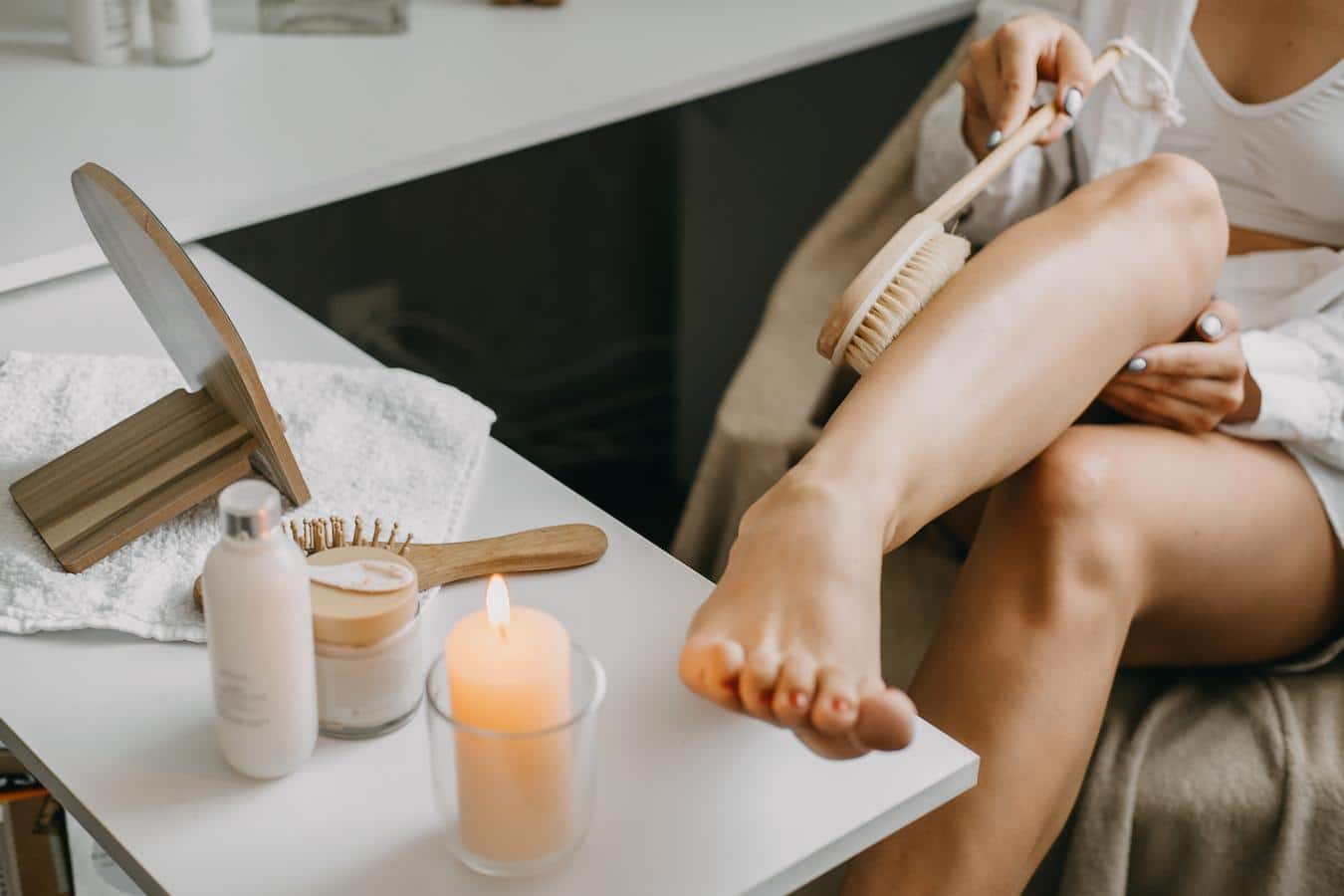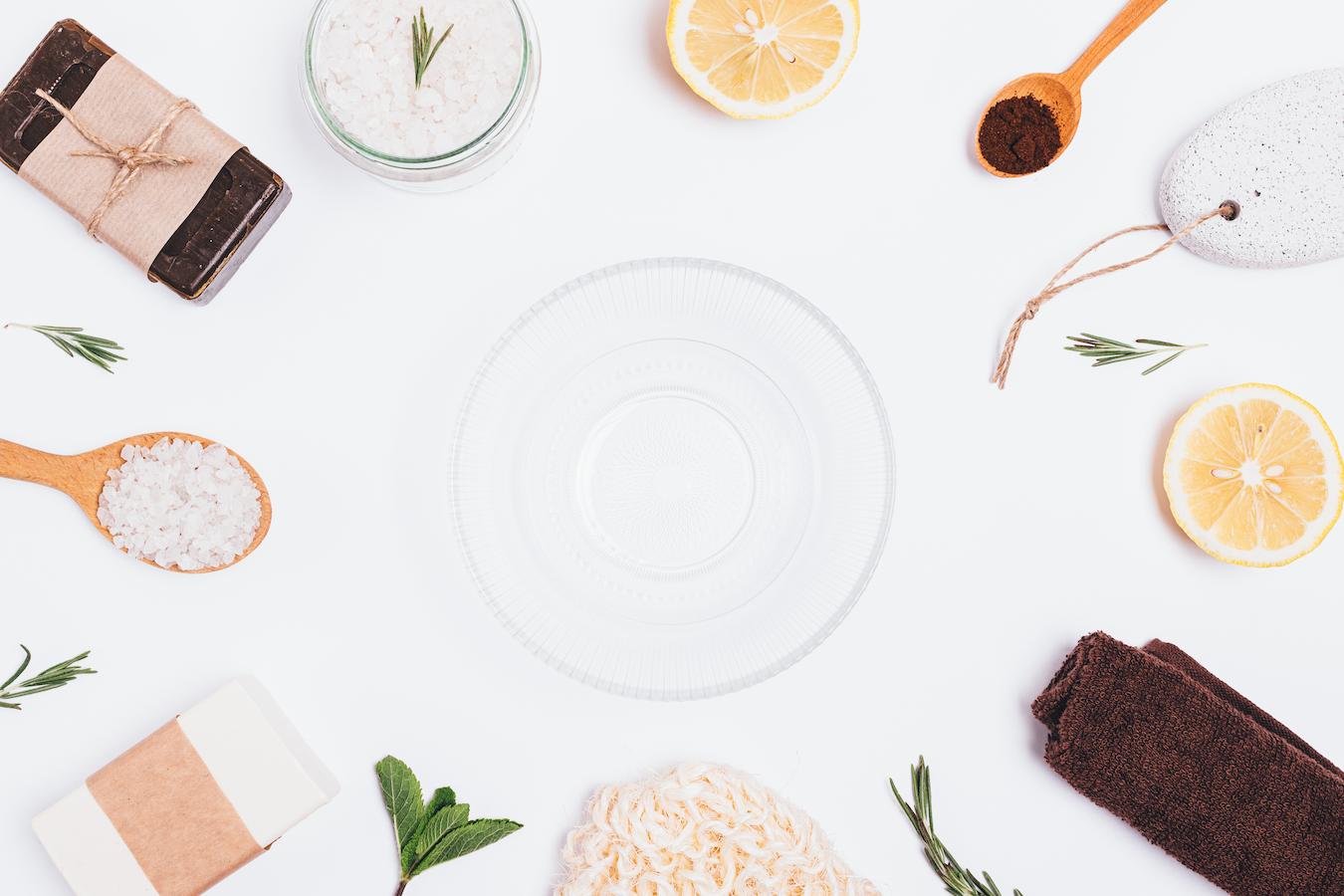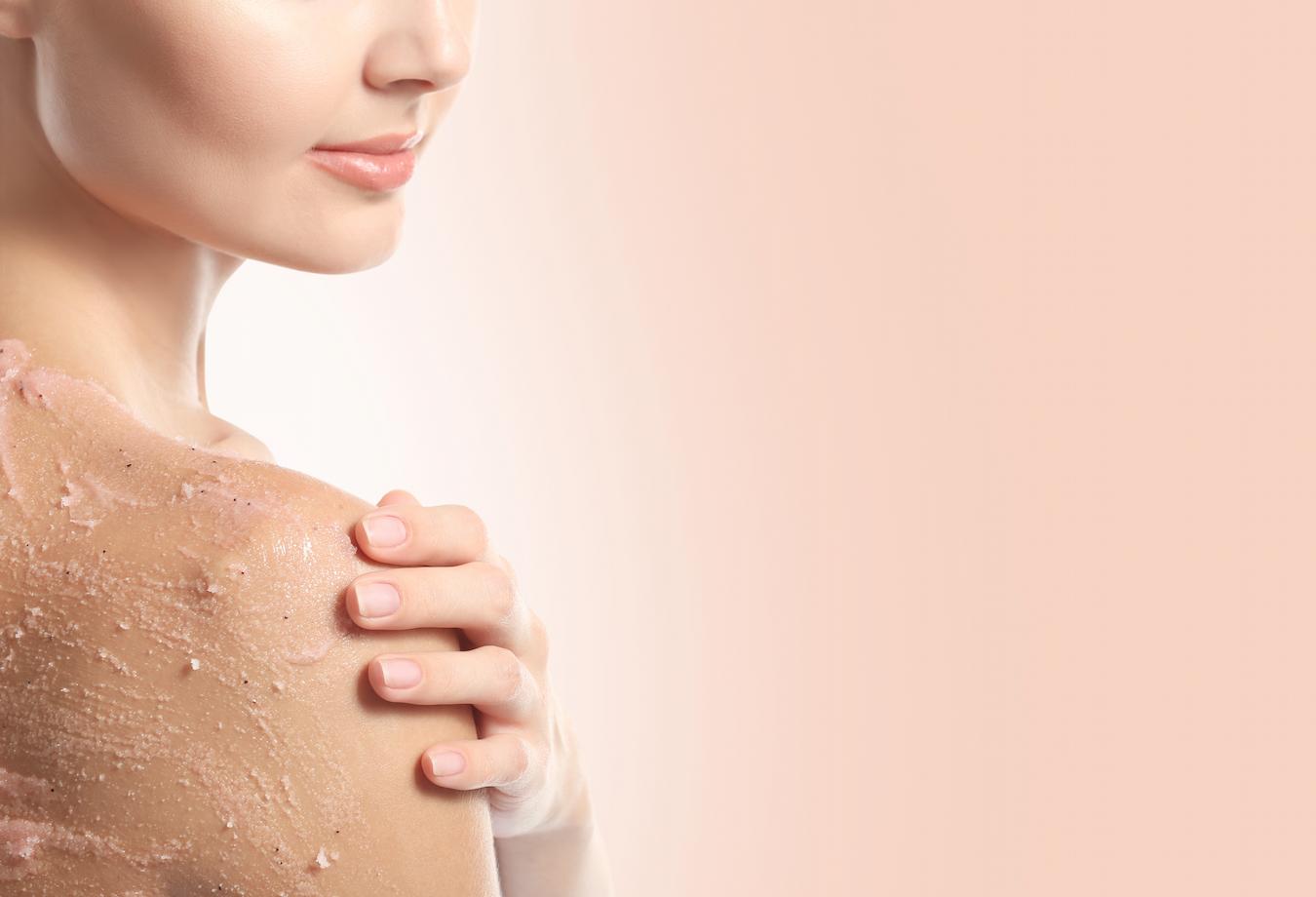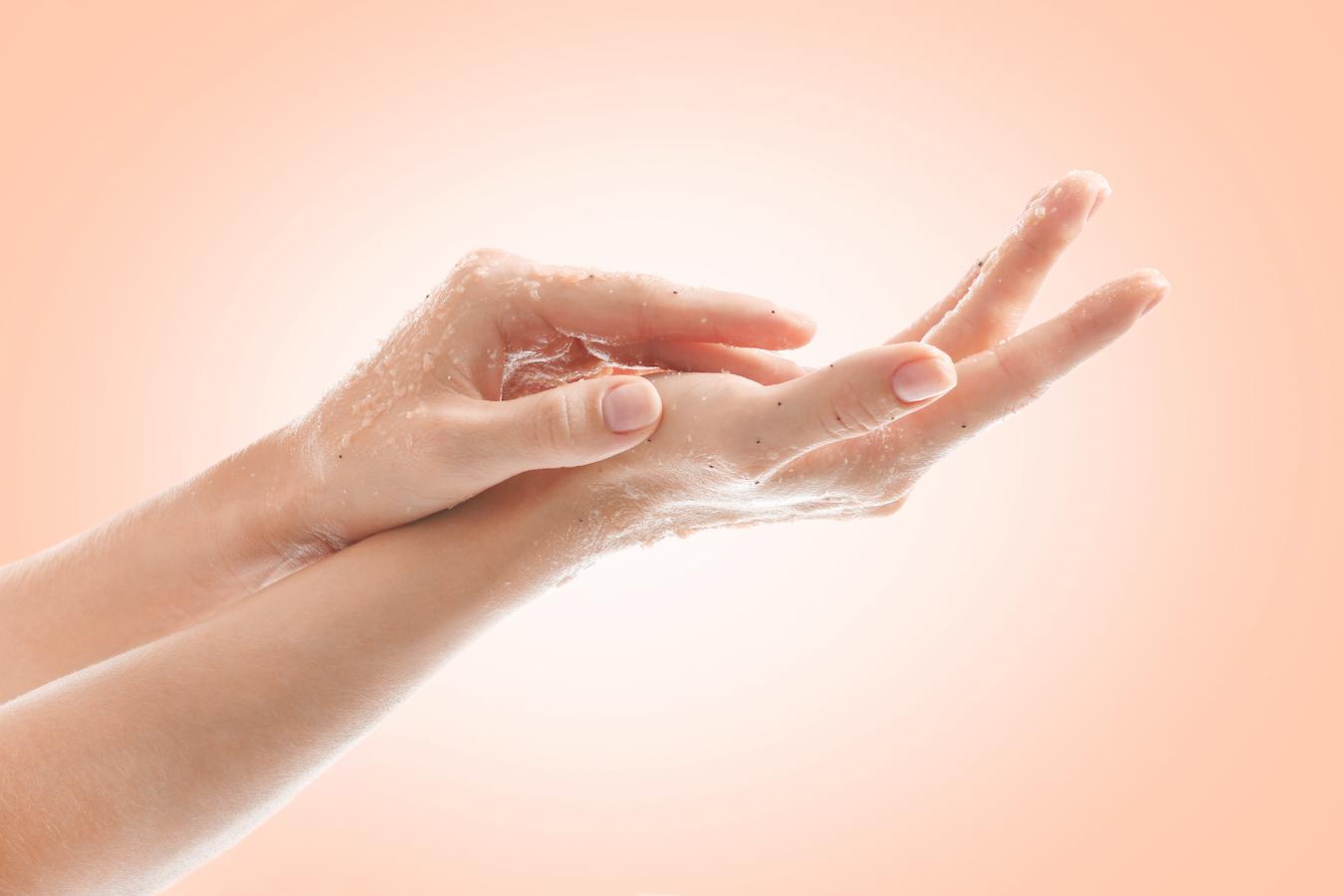How Often Should You Exfoliate Your Body?

Dead skin cells, clogged pores, dull skin – all of that sounds pretty awful, right? But odds are, if you’re reading this, you’ve been bit by the exfoliation bug that’s helped you get rid of all those little nasties.
And you’ve witnessed the wonders that body exfoliation can bring. But, when it comes to exfoliation, is it possible that there’s too much of a good thing going on?
Like many before you, you’re having to answer an age old question of how often you should exfoliate, when you should exfoliate, and why. Luckily, you’ve also got us on your journey to finding those answers.
See Related: 10 Tips to Keep Your Skin Hydrated
The short answer to glowing skin
Achieving smooth skin isn’t actually that difficult. That is if you have the right kind of body exfoliation and the right exfoliation routine on your side.
Below you can find a general guide for how often you should exfoliate your body. But, as we’ll always say, it’s best to listen to your skin first.
- For normal skin, you should be exfoliating about two or three times a week. That’s generally a safe starting point, but if you feel your skin tolerates exfoliation well, then you can exfoliate more frequently. But always listen to your skin.
- Those with oily skin can feel free to amp up their exfoliation routine. As in, you can exfoliate every single day. So long as your skin tolerates a body scrub well.
- For sensitive skin, you’ll want to dial back your exfoliation game. Once a week should be good enough to get rid of those dead skin cells. But if your skin is particularly sensitive, you may want to forgo exfoliation altogether.
Consider this guide a general rule to starting your exfoliation routine. Because there’s a lot more that goes into exfoliating than you think.
Interested in learning more? Then read on!
A typical exfoliation routine
For those that appreciate the deep clean exfoliation provides, here’s your deep answer into the in’s and out’s of exfoliating. (What? That wordplay was too good to pass up.)
#1. No matter what, start with a cleanser
All skin types should start with a cleanser. It doesn’t matter if you have dry or sensitive skin, acne prone skin, mature skin, oily skin, or otherwise.

No matter your skin type, you must always start with a cleanser. Using a gentle formula to wash away any dirt and impurities is a crucial step to exfoliating.
So after you’ve cleansed away, rinse thoroughly. Now, the fun part begins…
#2. Assess your skin type
Okay, we jumped the gun. First, you need to figure out what skin type you have so that you can match the perfect exfoliating agents to your skin care routine.
Normal skin
For the most part, those with normal skin can enjoy any and all skin care products available. Whether they’re natural exfoliator products or other skin care products, you’re in the clear.
That being said, you may enjoy the results you get from exfoliating ingredients like lactic acid, salicylic acid, or glycolic acid. But that all boils down to your personal preference.
Oily skin
Those with oily skin will benefit from any type of physical exfoliation or chemical exfoliation. So really, the skin care world is your oyster.
As with all skin types, it’s important to avoid over-exfoliating. But again, oily skin gets somewhat of a pass since all the natural oils on your face like to linger on the skin’s surface.
Dry skin
Dry skin generally does best with one of the more gentle chemical exfoliants like a glycolic acid exfoliator. Because while you’re trying to remove dead skin cells, you also don’t want to cross the line of over exfoliation.

In fact, certain ingredients you may want to avoid include retinol and benzoyl peroxide. When exfoliating your body with these combined ingredients, you may end up drying out your skin further, leading to breakouts.
Sensitive skin
Like dry skin, sensitive skin will also do best with a gentler body scrub. Rather than look for the ingredients we mentioned above, turn your attention towards natural enzyme exfoliants.
Like papaya enzymes or even pomegranate enzymes. This will still allow you to engage with the exfoliating process without causing irritation.
Combination skin
Those with combination skin pretty much have their pick of the litter. You can choose gentler body scrubs formulated specifically for sensitive skin.
Or, you can get a deeper clean with body scrubs formulated for oily skin. It really depends on the specific area of the body that you’re looking to exfoliate.
#3. Choose an exfoliant
Regular exfoliation can either be a workout or a sit-back-and-relax-situation. So, here’s how you can determine which process will be the best one for you.
Chemical exfoliants
Chemical exfoliants like water-soluble alpha hydroxy acids (AHAs) and oil-soluble beta hydroxy acids (BHAs) remove dead skin cells by going beneath the skin’s surface. There, they dissolve the bonds holding your skin cells together.
And they slough off dead cells, making room for new skin cells to grow. Additionally, they can increase cell turnover time so that the top layer of your skin is silky smooth.

Typically, chemical exfoliants are much gentler than physical exfoliants. But more on that later. What you need to know now is that chemical exfoliants do most of the work for you.
Because their task lies beneath the skin’s surface. That being said, you can still run the risk of over-exfoliation with chemical exfoliants. So don’t scrub too hard and dry out your pores!
Physical exfoliants
Physical exfoliants, on the other hand, are much more labor intensive. They can be anything from body scrubs to dry brushes to pumice stones and more.
When you scrub with a physical exfoliant, it’s up to you and those strong muscles of yours to break through the outer layer of the skin and reveal fresh and glowing skin underneath.
It’s typically recommended to exfoliate in the shower so that any dead skin and impurities can just slide down the drain. And as far as targeting particular areas, there are a couple of spots that tend to get drier than others.
Knees, elbows, feet, thighs, and buttocks are all good areas to target when it comes to exfoliation. But of course, dry skin can build up anywhere.
Thankfully, with the right exfoliating tools for your unique skin type, you can ensure a brighter complexion. Whether using physical exfoliants or chemical exfoliants.
No more ingrown hairs, dead cells, or dark spots on your skin barrier. Instead, with weekly exfoliation, you can achieve glowing skin throughout your whole body.
Bonus: 13 Best Anti-Aging Oils For Wrinkles According To Experts
#4. Exfoliate your body
“How often should you exfoliate?” is a great question. But an even better question is this: “What’s the best way to exfoliate your body?”
Because there is a clear method. And when stuck to, you’ll find the sweet spot as you scrub your pores clean and avoid breakouts in the process.
To start, you’ll want to double check the instructions on the label of your product. Every product is different so the distributing company will likely have specific directions for how you should best approach the scrub.
But in general, you’ll want to exfoliate your body with a body scrub using a gentle circular motion. And depending on how deep you want to go, you can gently exfoliate for a few seconds up to thirty seconds.
And if you’re exfoliating your face, start with a pea-sized amount of product and apply it to your forehead, chin, nose, and cheeks. You can use a soft face brush or wash cloth to massage it into your skin.
And be sure to use those circular motions for your face as well! Afterwards, rinse with cool or lukewarm water. And bask in the lack of dead cells on your body!
#5. Moisturize immediately afterwards
After exfoliating your body, it’s always best to apply lotion, cream, or serums if you’re exfoliating your face. Preferably a water based moisturizer if we are so bold to say ourselves.

This will ensure that the skin all over your body remains hydrated even after getting a well-earned scrub down. And if your skin feels particularly sensitive after a round of exfoliating, consider stepping back your approach to exfoliating fewer times a week.
You don’t want to over exfoliate your body and scrub away vital skin cells. So just remember to take it one step at a time.
Scrubbing your cares away!
Using a body scrub can feel luxurious. Because after all, you’re sloughing off everything your body doesn’t need.
In a way, exfoliating your body is like engaging in a transformation. And once you emerge, you come out brighter and more glowing than ever before.
So allow your exfoliation routine to be as much for your mental health as well as your skin health. Merging the two will only make your life and skin all the more happy.
Keep Reading: A Guide On How To Get Clear Skin
—
For over 60 years, Viviane Woodard has represented “The Purity of Skincare”. We are the leading beauty brand for skin care products and promote the importance of good skin hydration. Follow us on Facebook, Instagram, Twitter, and Pinterest for skin care tips, product discounts, and more.
